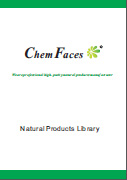| Description: |
1,7-Dihydroxy-2,3-dimethoxyxanthone may have medicinal use in the management of inflammation, asthma and allergy, it antagonises in a non competitive but, reversible manner the contractions induced by chemical inflammatory mediators in the guinea pig trachea in vitro.It shows significant inhibitory effects on LPS-induced NO production in BV2 microglia cells. |
| Targets: |
NO |
| In vitro: |
| J Enzyme Inhib Med Chem. 2012 Feb;27(1):1-4. | | Chemical constituents of Polygala tenuifolia roots and their inhibitory activity on lipopolysaccharide-induced nitric oxide production in BV2 microglia.[Pubmed: 21740104 ] | A methanolic extract of the roots of Polygala tenuifolia (Polygalaceae) significantly attenuated nitric oxide (NO) production in lipopolysaccharide (LPS)-stimulated BV2 microglia cells.
METHODS AND RESULTS:
Five xanthones, 1-hydroxy-7-methoxyxanthone (1), 3,6-dihydroxy-1,2,7-trimethoxyxanthone (2), 1,3,6-trihydroxy-2,7-dimethoxyxanthone (3), 1,7-Dihydroxy-2,3-dimethoxyxanthone (4) and 1,7-dihydroxy-3-methoxyxanthone (5), and five phenylpropanoids, 4-hydroxy-3-methoxypropiophenone (6), methyl 4-hydroxy-3-methoxycinnamic acid (7), 3,4,5-trimethoxycinnamic acid (8), 4-methoxycinnamic acid (9) and β-d-(3-O-sinapoyl) fructofuranosyl-α-d-(6-O-sinapoyl)glucopyranoside (10), were isolated from CHCl(3) fraction using bioactivity-guided fractionation.
CONCLUSIONS:
Among these compounds, compounds 1, 2, 4, 5 and 7 showed significant inhibitory effects on LPS-induced NO production in BV2 microglia cells at the concentration ranging from 10.0 to 100.0 μM. |
|
| In vivo: |
| J Pharm Pharmacol. 2013 May;65(5):767-76. | | Role of gastric mucus secretion, oxinitrergic system and sulfhydryl groups on the gastroprotection elicited by Polygala cyparissias (Polygalaceae) in mice.[Pubmed: 23600395] | This study has aimed to assess the mechanisms of action for the gastroprotective effect of the acetone extract (PCAE) and methanol fraction (PCMF) of Polygala cyparissias, as well as to evaluate the activity of 1,3,6,8-tetrahydroxy-2,7-dimethoxyxanthone (1), 1,7-Dihydroxy-2,3-dimethoxyxanthone (2) and astragalin (3).
METHODS AND RESULTS:
Gastric secretion and mucus content were determined by pylorus ligation in mice. Nitric oxide (NO) and sulfhydryl group participation were observed by the pretreatment of mice with L-NAME or NEM. Acute ulcer was induced by ethanol/HCl and chronic ulcer by acetic acid. Anti-Helicobacter pylori activity was evaluated by the agar solid dilution assay. KEY FINDINGS: Neither PCAE nor PCMF had the ability to reduce H(+) concentration. However, both of them enhanced mucus secretion. PCAE demonstrated its gastroprotection in a NO-dependent manner, while PCMF exerted the activity depending on the sulfhydryl group. In chronic ulcer, the curative ratios for the PCAE and PCMF were 67.5 and 58.4%, respectively. No effect over H. pylori was detected. Compounds 1, 2 and 3 were able to reduce lesions in the order of 79.6, 73.8 and 67.6%, respectively.
CONCLUSIONS:
The data suggested that PCAE and PCMF displayed antiulcer activity due to different mechanisms and with the participation of phenolic compounds obtained from the plant. |
|
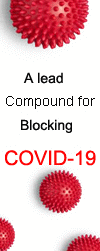
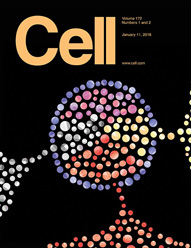 Cell. 2018 Jan 11;172(1-2):249-261.e12. doi: 10.1016/j.cell.2017.12.019.IF=36.216(2019)
Cell. 2018 Jan 11;172(1-2):249-261.e12. doi: 10.1016/j.cell.2017.12.019.IF=36.216(2019)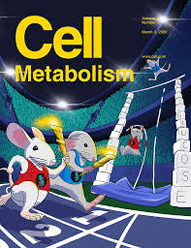 Cell Metab. 2020 Mar 3;31(3):534-548.e5. doi: 10.1016/j.cmet.2020.01.002.IF=22.415(2019)
Cell Metab. 2020 Mar 3;31(3):534-548.e5. doi: 10.1016/j.cmet.2020.01.002.IF=22.415(2019)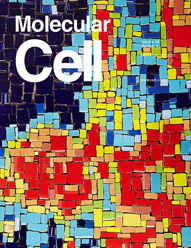 Mol Cell. 2017 Nov 16;68(4):673-685.e6. doi: 10.1016/j.molcel.2017.10.022.IF=14.548(2019)
Mol Cell. 2017 Nov 16;68(4):673-685.e6. doi: 10.1016/j.molcel.2017.10.022.IF=14.548(2019)